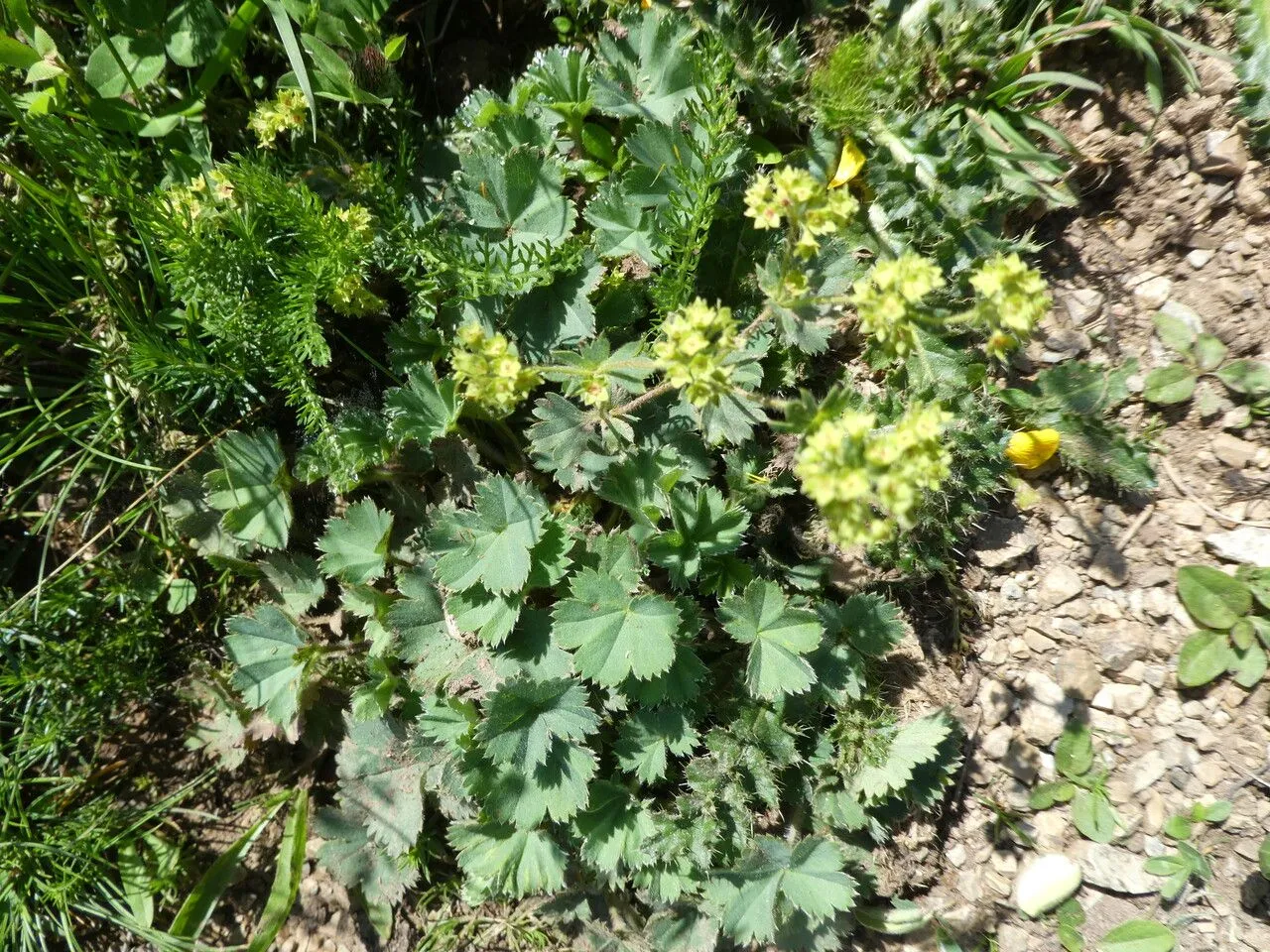
Author: Buser
Bibliography: Bull. Soc. Dauphin. Échange Pl., sér. 2, 3: 101 (1891 publ. 1892)
Year: 1892
Status: accepted
Rank: species
Genus: Alchemilla
Vegetable: False
Observations: Europe
Small lady’s-mantle, scientifically known as Alchemilla flabellata, is a captivating herbaceous perennial belonging to the Rosaceae family. Originating from Europe, this charming plant has been admired and studied since its formal description in the late 19th century. Jean Buser, a notable botanist, officially introduced it to the scientific community in a publication of the Bulletin of the Society of Dauphiné’s Plant Exchange in 1891, which was publicized in 1892.
Renowned for its elegantly lobed, fan-shaped leaves that often appear as delicate geometrics woven by nature, Small lady’s-mantle exudes a subtle, yet captivating aesthetic. The leaves are finely serrated, velvety to the touch, and typically adorned with dew or rain droplets in the mornings, creating a gleaming spectacle. This characteristic appearance is a hallmark of the Alchemilla genus and contributes to the plant’s popularity in ornamental gardening and landscape design.
Small lady’s-mantle produces tiny, greenish-yellow flowers that stand out against its lush foliage. These blooms, while not flamboyant, draw the eye with their understated simplicity and complement the plant’s overall grace. The flowering period extends from late spring to summer, adding a soft touch of color to gardens and natural habitats during these seasons.
In addition to its ornamental value, Alchemilla flabellata has been historically associated with traditional herbal medicine, much like its relatives in the Alchemilla genus. The plant has been used in various folk remedies, especially for its astringent properties, although such uses are more anecdotal and region-specific.
Growing Small lady’s-mantle is relatively undemanding, making it an excellent choice for gardeners of all skill levels. It thrives best in well-drained soil and can tolerate partial to full sun, although it prefers cooler climates, reflecting its European origins. This hardy plant can be a resilient addition to rock gardens, borders, and even woodland settings, where it can naturalize and spread modestly without becoming invasive.
In summary, Alchemilla flabellata, or Small lady’s-mantle, is a delightful member of the rose family renowned for its decorative foliage, modest blooms, and historical significance. It continues to enchant botanists, herbalists, and gardeners alike with its beauty and versatility, standing as a testament to nature’s artistry.
Deu: fächer-frauenmantel, fächerblatt-frauenmantel
En: Small Lady’s-mantle
Bg: Ветриловидно шапиче
Cs: Kontryhel vějířovitý
Fr: Alchémille à feuilles en éventail, Alchémille en éventail, Alchémille flabellée
De: Fächerblatt-Frauenmantel, Fächer-Frauenmantel
It: Ventaglina
Pl: Przywrotnik siwy
Uk: Приворотень віяловий
: Small lady’s-mantle
Taken Aug 15, 2011 by Photoflora – Jean-Luc TASSET (©)
Taken Jul 27, 2016 by Tela Botanica − Augustin ROCHE (cc-by-sa)
Taken Jul 15, 2001 by Photoflora – Jean-Luc TASSET (©)
Taken Jul 15, 2001 by Photoflora – Jean-Luc TASSET (©)
Taken Jul 1, 2021 by Llandrich anna (cc-by-sa)
Taken Jul 1, 2021 by Llandrich anna (cc-by-sa)
Taken May 29, 2020 by Alain Chanu (cc-by-sa)
Taken Jul 17, 2014 by Tela Botanica − Hugues TINGUY (cc-by-sa)
Taken Jun 19, 2022 by Fochs Ivet (cc-by-sa)
Taken Jul 17, 2014 by Tela Botanica − Hugues TINGUY (cc-by-sa)
Taken Jul 1, 2021 by Llandrich anna (cc-by-sa)
Taken Jun 7, 2022 by Luis Elias Chahua Janampa (cc-by-sa)
Taken Jun 7, 2022 by gonzalo arthuro mendez maturrano (cc-by-sa)
Taken Aug 3, 2022 by Henri Sneessens (cc-by-sa)
Taken Jun 28, 2007 by Tela Botanica − Julien BARATAUD (cc-by-sa)
Taken Jul 17, 2014 by Tela Botanica − Hugues TINGUY (cc-by-sa)
Ph maximum: 4.5
Ph minimum: 4.0
Light: 8
Atmospheric humidity: 5
Soil nutriments: 1
Family: Myrtaceae Author: (F.Muell.) K.D.Hill & L.A.S.Johnson Bibliography: Telopea 6: 402 (1995) Year: 1995 Status:…
Family: Rubiaceae Author: Pierre ex A.Froehner Bibliography: Notizbl. Bot. Gart. Berlin-Dahlem 1: 237 (1897) Year:…
Family: Sapindaceae Author: Koidz. Bibliography: J. Coll. Sci. Imp. Univ. Tokyo 32(1): 38 (1911) Year:…
Family: Asteraceae Author: A.Gray Bibliography: Pacif. Railr. Rep.: 107 (1857) Year: 1857 Status: accepted Rank:…
Family: Fabaceae Author: Medik. Bibliography: Vorles. Churpfälz. Phys.-Ökon. Ges. 2: 398 (1787) Year: 1787 Status:…
Family: Aspleniaceae Author: (Cav.) Alston Bibliography: Bull. Misc. Inform. Kew 1932: 309 (1932) Year: 1932…